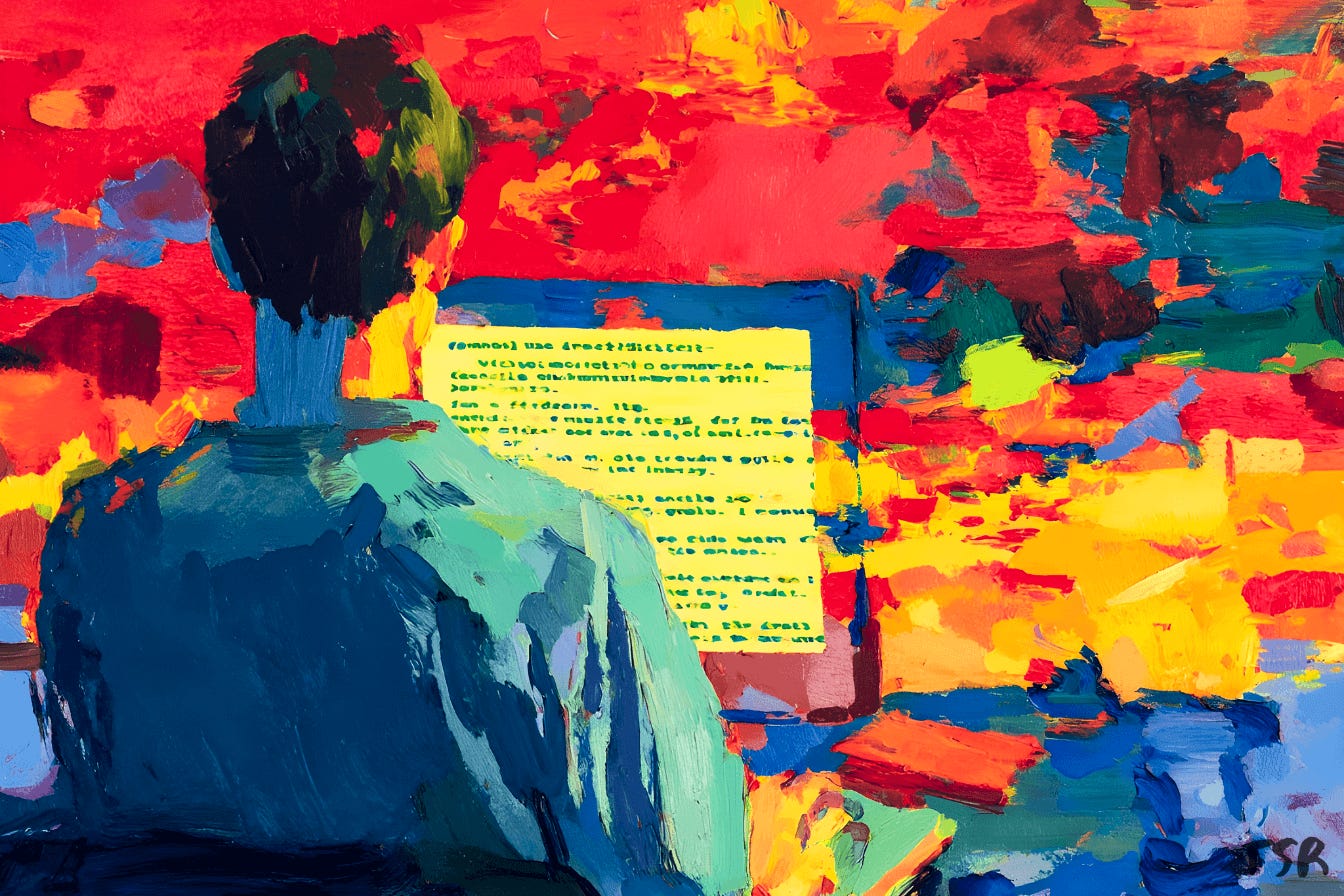The Language Trap: Writing Under Machine Suspicion
How chasing AI approval narrows both language and thought
In our rush to separate the human from the machine, AI detectors have taken on the role of unlikely gatekeepers. They promise a glimpse into what is “truly” human in a world where the line between individual and artificial expression is increasingly blurred.
But beneath that promise lies a curious paradox: writing that’s clear, structured, and precise—essentially, the hallmarks of thoughtful communication—can appear artificial, as noted in multiple studies.
Beyond that, AI detectors may be shaping the way we think and express ourselves without most of us even realizing it.
How Does Predictable Language Become a Trap?
At the heart of the matter is tokenization: the way AI parses text into sequences and predicts what comes next.
As we know, AI thrives on patterns, and in its appetite for predictability, logical flow and structured phrasing can be flagged as “artificial." Ironically, entirely human writing—clear, structured, and rhythmic—can easily be misclassified.
Consider a university essay: each paragraph opens with a clear topic sentence, notes data-driven insights, transitions smoothly, uses expressions such as “for example” and “in conclusion,” and closes with a reflective thought.
To human eyes, it’s coherent and meticulous. To a detector, it might read as suspiciously formulaic. The author, puzzled, may find themselves editing for unpredictability just to avoid misclassification.
Writers navigating this landscape often end up in that liminal space: smoothing transitions, adjusting cadence, mixing tonally acceptable phrasing, and reworking rhythm to make text appear more “human.”
Why Are Non-Native Speakers Especially Vulnerable?
For English learners, clarity often depends on rules and structure. Grammar, repetition, and careful phrasing are tools for effective communication.
These linguistic patterns usually seem too rigid to native speakers, whose experience of the language is more instinctive and fluid.
One study found that over half of its non-English writing samples were misclassified as AI-generated. Simplified native writing suffered a similar fate.
Meanwhile, more “literary” writing was considered more “human.” This raises concerns about robustness and suggests that writers with limited linguistic proficiency may be unfairly misclassified.
As we can see, without immersion in native rhythms, vernacular, and subtle stylistic quirks, non-native writers risk being labeled less human. And by mistaking clarity and predictability for artificiality, detectors inadvertently push non-native speakers to the margins.
How Does AI Detection Shape the Way We Write?
The effect is subtle but real. Formal, well-organized texts, especially academic ones, tend to get overestimated as AI-generated. People aware of this might break up sentences, vary flow, or adopt stylistic quirks to appear more unpredictable.
Studies also note that high-confidence detection is unreliable, often reacting to well-structured, careful, and easy-to-read writing as if it were artificial.
This pressure to alter natural expression compounds when combined with society’s increasing reliance on AI.
Why Do We Lean on AI So Much?
The problem isn’t just the detectors. Many people perceive AI as flawless intelligence—a byproduct of our automation bias. This can mean that fact-checking and verification of AI outputs aren’t always part of the writing process.
But relying on AI completely creates a binary of thinking—human versus machine—that flattens nuance, discourages critical thinking, and narrows the way we express ourselves.
And the more we rely on chatbot responses, the more we subconsciously begin to mimic AI output patterns. Naturally, this can homogenize language over time.
How Does AI Influence the Language We Learn?
Language evolves through interaction. Just as we pick up quirks and slang from online comments or social media, exposure to AI outputs can shape the patterns we use in writing.
Over time, detector-driven adjustments create a feedback loop: AI influences human writing, which feeds back into the very tools designed to detect it. As a result, this loop subtly narrows the diversity of expression.
Think about people learning English from YouTube comments: they often absorb repeated mistakes, odd phrasing, out-of-context slang, or unnatural structures.
AI outputs can have the same effect, teaching certain patterns as standard, making them more common—and ironically, more detectable.
A Cornell study shows that AI writing tools promote standardized language forms. When using AI, Indian and American writing became more homogenized, mainly “at the expense of Indian writing styles.”
The study also found that AI suggestions tend to make writing more generic and Western-centric, potentially erasing cultural and linguistic diversity. Interestingly, the same study revealed that the use of AI led to “writing that stereotyped Indian culture.”
This dynamic connects back to earlier points about predictability and non-native speakers, highlighting how different elements converge to curb expression.
Can the Human Element Be Measured?
We all know that being human is about more than grammar or sentence structure; it’s about intention, context, subtext, and lived experience. Detectors focused on statistical oddities risk missing this.
As AI shapes both writing and detection, the paradox grows: tools meant to preserve human expression through guesswork end up quietly reshaping it, squeezing the range of how we speak, write, and think.
The stakes are cultural as much as technical. Writing that’s careful, clear, or thoughtfully structured can become suspicious. As a result, language itself—a living reflection of thought and experience—risks being flattened into patterns and probabilities.
We need to keep reminding ourselves that while being human is messy, unpredictable, and context-driven, it also includes the capacity for structured thinking that allows us to communicate and co-exist meaningfully.
Closing Reflection
Every factor—predictability, non-native expression, and AI influence—interacts to reshape our writing. The paradox is, unsurprisingly, deeply existential. Language isn’t a score to be measured but a living artifact of thought, feeling, and experience.
We also have to consider the vast amount of training data that shaped the patterns AI models now reproduce. This language isn't a product of mechanization, but a byproduct of linguistic absorption.
In the end, the boundary between human and machine may be less a line to defend than a space to explore—one where language, thought, and expression continue to grow in surprising, rather than constricted, ways.



